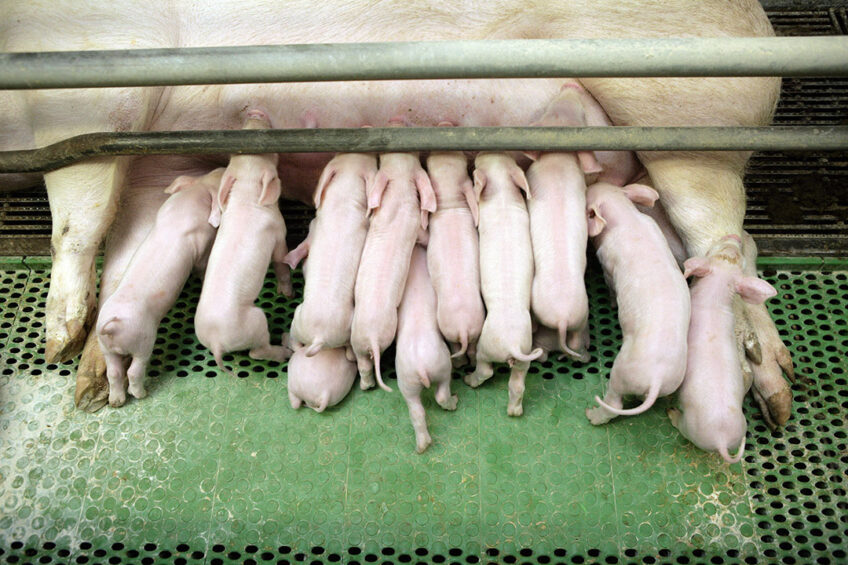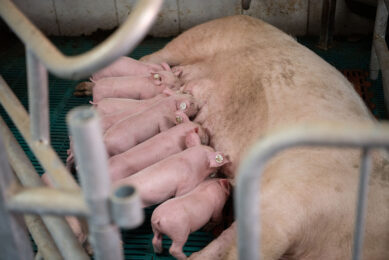Taking control of piglet mortality

Piglet mortality seems inevitable in pig farming, as on most commercial farms the litter size by far exceeds sows’ natural capacity to wean. In order to better deal with this situation, a deeper understanding of mortality causes can help making the appropriate decisions, writes welfare expert Dr Irene Camerlink.
Hypothermia and no milk at the udder
Piglets may die because of stillbirth, birth defects, hypothermia, being savaged or crushed by the sow, starvation or disease; and several of these causes are interrelated. For example, piglets that get too cold (hypothermia) may fail to access the udder at milk let down. These hungry and chilled piglets may spend more time around the udder and, because they are already weak, the sow is more likely to crush them. This is described in the hypothermia-starvation-crushing mortality complex, which underlies a substantial amount of piglet mortality.
While it is the sow that crushes the piglets, the farmer makes the decisions that determine how likely she is to crush
Reducing piglet mortality by management
Management decisions can reduce piglet mortality in many cases. While it is the sow that crushes the piglets, the farmer makes the decisions that determine how likely she is to crush. Decisions on genetics, nutrition, housing conditions and daily management all influence a sow’s maternal behaviour and her capacity to nurse, and thus influence piglet mortality. Therefore, it is important to look not only at the main causes of mortality but also at the factors leading to them. Mortality increases with litter size, and deciding for quantity (litter size) over quality (strong piglets) will influence the percentage of weak piglets that end up dying.
Dealing appropriately with weak piglets
When undertaking pig management it is also necessary to take responsibility for the related outcomes, which includes taking an active stance to deal appropriately with weak, injured and unviable piglets. If mortality occurs, then it is best to minimise the amount of suffering for the sow and the piglet. If the piglet dies during the birthing process (or soon after) it possibly does not experience much pain, as the lack of oxygen makes it unconscious. Instant death due to trauma can cause intense but short-lived pain, but in the case of the hypothermia-starvation-crushing complex the piglet will have suffered beforehand. Prolonged disease and starvation compromise piglet welfare the most.
Best decision for animal welfare
When it is clear that the piglet will not be able to live until slaughter, for example due to birth defects or extremely low body weight, then it is best to euthanise it as early as possible. It is an unpleasant task, but in most cases it is the best decision for animal welfare. Moreover, euthanising weak, ill or injured piglets in a timely manner will increase the chance of survival for the rest of the litter.
 Beheer
Beheer








 WP Admin
WP Admin  Bewerk bericht
Bewerk bericht